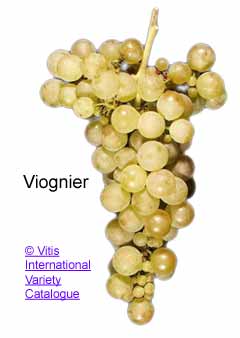Cline Cellars
 In the latter part of the 1800s, Oakley, Contra Costa County was a booming farming community with thousands of acres of orchards and healthy vineyards. Fred Cline's maternal grandfather, Valeriano Jacuzzi of pump and spa fame, called this place home. On summer visits to his grandparents, Fred learned both the love of agricultural life and the mysteries of vinifying grapes into wine. These lessons led Fred to obtain a degree in Agriculture Management from U.C. Davis. In 1982, with an inheritance from his grandfather, Fred founded Cline Cellars near Oakley, California. Here, he preserved and restored many ancient vine sites to their rightful reign as premier California wine lands.
In the latter part of the 1800s, Oakley, Contra Costa County was a booming farming community with thousands of acres of orchards and healthy vineyards. Fred Cline's maternal grandfather, Valeriano Jacuzzi of pump and spa fame, called this place home. On summer visits to his grandparents, Fred learned both the love of agricultural life and the mysteries of vinifying grapes into wine. These lessons led Fred to obtain a degree in Agriculture Management from U.C. Davis. In 1982, with an inheritance from his grandfather, Fred founded Cline Cellars near Oakley, California. Here, he preserved and restored many ancient vine sites to their rightful reign as premier California wine lands.
In 1991, Fred and his wife Nancy relocated the winery from Oakley to the Carneros region of Sonoma County on a historic 350-acre estate with new vineyards and facilities. While much of the cool Carneros region is planted to Chardonnay, Pinot Noir and Merlot, Fred pioneered the planting of Rhône varietals including Syrah, Viognier, Marsanne and Roussanne.
Fred's innovation and experimentation led to producing rich, distinctive Rhône-style wines and intense, flavorful Zinfandels for which he has garnered enormous acclaim. In 2007, our 2004 Sonoma Zinfandel was rated 91 pts by the Wine Spectator, the 2004 Bridgehead Zinfandel was rated 90 pts, and the 2004 Ancient Vines Mourvèdre was named, “One of the top 100 values of the Year” by Wine & Spirits, June 2007 issue.
Winemaking

Fred Cline

Charlie Tsegeletos
Style by appellation
Cline approaches each appellation stylistically. Working closely with thier vineyard managers ensures that they capture the maximum flavor concentration from the grapes which ultimately go into the wine.
Fred Cline
Proprietor - Cline Cellars
Charles (Charlie) Tsegeletos
Winemaker/Director of Winemaking
Charlie Tsegeletos was raised in Northern California by an Italian mom and a Greek dad. Growing up, his family always had a bottle of wine on the table. His interest in wine was inherited through his great grandfather, Guippe Guidotti, who in the 1930s grew grapes and made wine in the Guerneville area of Sonoma County.
In 1979, Charlie earned his degree in Agricultural Science and Management/Plant Science from the University of California at Davis and began his wine-making career in 1980 at the age of 24 as an apprentice for Pendleton Winery. In the 1980s, he held wine-making positions at Hacienda Wine Cellars, D’Agostini Winery and Glen Ellen Winery. Charlie joined Cline Cellars in 2002 and is responsible for wine-making and production for the winery’s Cline, Oakley and Jacuzzi Family Vineyards brands.
Charlie often lets the grapes guide his style of wine-making. He works closely with the Vineyard Managers to ensure that varietals are planted in locations that will provide optimal acid and sugar levels and express true varietal characteristics. He then hones his wine-making skills to shepherd the wine towards his chosen style. His red wines are big and dark with lots of fruit concentration and delicate oak nuances; white wines are bright and fresh.
Charlie is a professional wine judge, a member of the Board of Directors for the Sonoma Valley Vintners and Growers Association, an avid snow skier and motorcyclist. He resides on an old chicken ranch in the hills of Sonoma with his wife and daughter and an assortment of animals.
Cline 2007 Los Carneros Viognier

Varietal:
Appellation:
Harvest Date:
Acid:
PH:
Residual Sugar:
Alcohol %:
Viognier
Carneros
September 25 & October 2
.61g/100ml
3.78
.30%
14.5%
Originally grown in the Condrieu and Château-Grillet regions of northern Rhône, Fred Cline first planted Viognier in his Sonoma vineyards in 1990. Sensitive to its surroundings, vineyard managers must keep a watchful eye. Grapes are late ripening and have to be picked at just the right moment. Cline’s Viognier offers rich and distinctive aromas of peaches, apricots, orange blossoms and honeysuckle. Drink within 2 to 3 years and serve slightly chilled.
Wine Profile:
Vineyard Notes:
Viognier is sensitive to its surroundings; grapes are late ripening and have to be picked at just the right moment. All the grapes for this vintage come from their home ranch in Carneros. The vineyards are located in the southern end of Sonoma and cooled by coastal breezes throughout the growing season. A small portion of the grapes comes from Clines Sonoma Coast vineyards where they are bathed in early morning fog and later warmed by the afternoon sun. The soil is rich with minerals and rarely needs irrigation. The longer hang-time allows the Viognier to achieve maximum fruit flavors and concentration.
Production Notes:
Grapes were handpicked and de-stemmed without being crushed (delicate handling is essential in creating a delicious wine) and immediately pumped to their tank press where the juice was gently squeezed from the grapes. The juice was then pumped to a stainless steel tank where it was chilled and settled overnight, then racked and inoculated with a pure strain of wine yeast. Fermentation proceeded at a cool 50 degrees F. They choose not to oak-age thier Viognier in order to let its flavorful fruit characters to shine through.
Winemaker Notes:
Viognier comes to Cline Cellars from the Condrieu and Chateau-Grillet appellations of the northern Rhone. It was presumed to have arrived from Dalmatia and transported to the Rhone by Emperor Probus in AD 281. Currently there are approximately 2,000 acres planted of this varietal in California. Cline’s Viognier offers rich and distinctive aromas of pears, apricots, orange blossoms and honeysuckle.
 Viognier seemed literally an endangered variety only a few years ago, but seems to be recovering worldwide in both popularity and acreage. Less than 35 acres remained planted in all of France, its homeland, in the late 1960s. Its newest realm, California, has 2,001 acres as of 2002 (although a considerable portion is not yet mature enough to bear a commercial crop) and there are also relatively new plantings in Australia and Brazil, as well as other U.S. plantings in Colorado, New York, North Carolina, Oregon, Texas, Virginia, and Washington.
Viognier seemed literally an endangered variety only a few years ago, but seems to be recovering worldwide in both popularity and acreage. Less than 35 acres remained planted in all of France, its homeland, in the late 1960s. Its newest realm, California, has 2,001 acres as of 2002 (although a considerable portion is not yet mature enough to bear a commercial crop) and there are also relatively new plantings in Australia and Brazil, as well as other U.S. plantings in Colorado, New York, North Carolina, Oregon, Texas, Virginia, and Washington.
The major drawback of the viognier grape is that it is a very shy producer and somewhat difficult to grow. Although drought tolerant, it is easily infected with powdery mildew in damp conditions or humid climates. Like many other varietals, viognier must be harvested at its peak of maturity in order to display its unique aroma and flavor character. The grape's tendency to develop high sugar but low acid can result in wines with neutral, merely vinous flavors and high alcohol. These cultivation problems and producer desires to capitalize on the grape's somewhat rarity combine to make many Viognier wines relatively expensive.
Probably the main attraction of Viognier is its potentially powerful, rich, and complex aroma that often seems like overripe apricots mixed with orange blossoms or acacia. With as distinctive and sweet an aroma-flavor profile as Gewürztraminer, Viognier is nevertheless usually made in a dry style and seems to appeal more to the typical Chardonnay drinker. The distinctive Viognier perfume holds up even when blended with a large portion of other grapes. The fruit usually has very deep color, but is somewhat low in acidity. As California wineries experiment with Viognier-Chardonnays, Viognier-Chenin Blancs, and Viognier-Colombards, this may be the grape's ultimate destiny, as a blender.
Both Chardonnay and Viognier share tropical fruit flavors and a creamy mouthfeel. Even with little or no wood aging, Viognier can be as full-bodied as an oaky Chardonnay, but has much more distinctive fruit character. It also has a typically deep golden color, as well as rich and intense flavor.
Because the prime appeal of Viognier is its fresh and striking aroma, it is a wine that should be consumed young in most instances. As to food matches, Viognier works well with dishes that might normally call for Gewürztraminer. Spicy dishes, such as spicy oriental stir-frys and even curry, especially Thai-style which is made with coconut milk, may be accompanied and complemented by Viognier. Also fruit salsas, atop grilled fish or chicken, can be miraculously tasty with Viognier.
In 1965 only a miserable eight hectares of Viognier (pronounced Vee-on-yay) grape existed in its Northern Rhône homeland appellation of Condrieu. Amazing, since some believe the grape had grown here for at least 2000 years, possibly transported to the Rhône from its birthplace in Dalmatia by the Romans.
Since 1965, the grape and its wine has increased in popularity and in its price, which has risen to 'serious drinker' level. California is not the only State showing an interest in Viognier. Washington State now has over 20 hectares planted and there are also plantings in Colorado, Georgia, New York State, North Carolina, Oregon, Texas and Virginia. Other parts of the world demonstrating an interest are Chile, Argentina, Uruguay, Brazil, Mexico, New Zealand, South Africa, Canada and Japan.
This wine will go perfectly with this June's recipe; Paula Deen's Spicy Southern Fried Chicken. Or pair it with our cheese selection, as it will enhance the wonderful notes of toasted hazelnuts Comte is famous for. It will also well prepare you for the wonderful peach dessert that completes our "Ode to the South."

wwww.clinecellars.com


